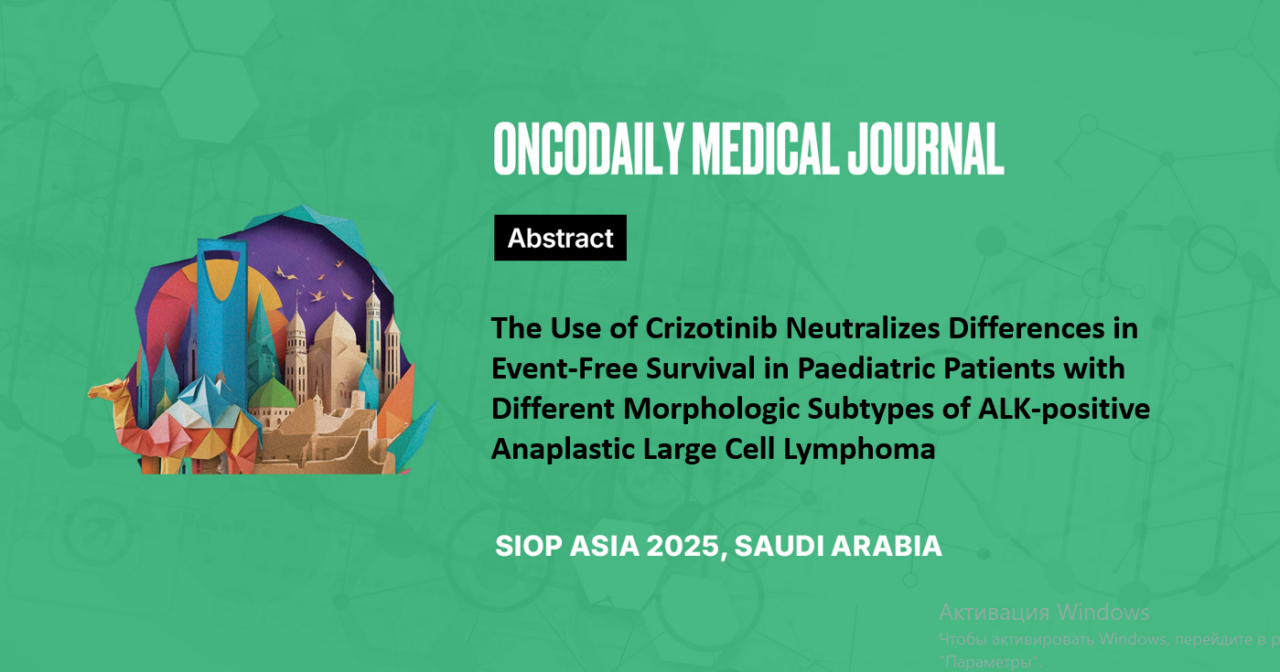The Use of Crizotinib Neutralizes Differences in Event-Free Survival in Paediatric Patients with Different Morphologic Subtypes of ALK-positive Anaplastic Large Cell Lymphoma
Abstract
Introduction: ALK-positive anaplastic large cell lymphoma (ALK+ ALCL) is a rare T-cell lymphoma that constitutes 10–20% of paediatric non-Hodgkin lymphoma cases. It is characterized by translocations involving the ALK gene. ALK+ ALCL is traditionally subdivided into common and non-common subtypes. 5-year overall survival rate is around 80%, however, relapse probability during the first 5 years after diagnosis is approximately 30%. Patients with non-common morphologic subtype demonstrated lower progression-free survival and higher risk of treatment failure in earlier studies.
Since that, new treatment strategies including targeted therapy have been developed. This study aims to analyze overall survival (OS) and event-free survival (EFS) in paediatric patients with ALK+ ALCL treated with tyrosine kinase receptor inhibitor crizotinib depending on morphologic subtype.
Methodology: We retrospectively analyzed tissue samples and medical records of 45 children diagnosed with ALK+ ALCL at a single tertiary care center in 2016-2023 and treated with crizotinib in addition to standard chemotherapy regimen in case of non-common morphologic subtype. Progression, relapse and death were considered to be events. 3-year OS and EFS were calculated. Kaplan-Meier method was used to estimate survival curves and log rank test was used to compare survival in two groups. Differences were considered significant at p<0,05.
Results: Median age was 10,4 years and a slight male prevalence was observed. Common subtypes accounted for 43,5% of cases. 3-year OS were 98% with only one death of a patient with a common subtype observed. 3-year EFS was 70 % (95 % CI 52-96 %) and 61 % (95 % CI 42-88 %) in patients with common and non-common subtypes, respectively. Differences were statistically insignificant (p=0,78).
Conclusion: In our work the use of crizotinib neutralized differences in EFS in patients with different ALK+ ALCL morphology. Further studies on larger cohorts are needed to confirm this finding.





